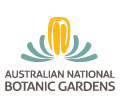

The Australian National Herbarium at the Centre for Plant Biodiversity Research provides plant identifications and advice on most botanical subjects. Enquiries submitted will be replied to by letter or email. Some may need to be referred to experts elsewhere, in which case you will be advised.
Service |
Charge1 |
Description |
|
Plant identification service |
Free |
Plant identification services for non-commercial enquiries by members of the general public and amateur organizations. Batches must be less than ten specimens. |
|
Plant identification service |
$23.00 per specimen (standard charge) $11.50 per specimen (reduced rate) |
Plant identification services. The standard charge applies to plant identification services for commercial enquiries or for batches greater than 10 specimens. A reduced rate of 50% of the standard rate may be applied when suitable specimens are given to the Australian National Herbarium; where specimens were collected as part of a collaborative project with the ANBG or Centre for Plant Biodiversity Research; where low-level identification (eg to genus level) is required; or for large projects. |
|
General botanical information services |
Free |
Information services for members of the general public and amateur organizations where the service requires less than one hour. |
|
Professional botanical information services |
Based on an hourly rate (currently $41.00 per hour inc GST). Minimum charge of three hours ($123.00 inc GST). |
Professional botanical information services including literature searches, data queries, data entry, taxonomic and nomenclature validity checks, proofreading of botanical manuscripts. Charges are based on an hourly rate for providing these services. Hourly charges are linked to the salary scale of an Environment Australia Level 6.3. |
1 Unless otherwise stated all charges include GST
Specimens should wherever possible be brought in person to the Visitor Centre at the Australian National Botanic Gardens during open hours (9.30am - 4.30pm every day except Christmas Day). If this is not possible, specimens may be sent by mail after they have been pressed and air-dried (see guidelines below).
Specimens will not in general be returned unless this is specifically requested.
Up to ten specimens per batch will be accepted; larger batches can only be accepted by specific arrangement with the Herbarium.
The Public Reference Herbarium is located in the Botany Building at the Australian National Botanic Gardens, and contains sample specimens for comparison with the material to be identified. It is being developed to cover all native and introduced taxa on the South Coast and Southern Tablelands. A library of reference books is also available. The Public Reference Herbarium is for do-it-yourself identifications, although assistance can be provided on request. Ask at the Visitor Centre for directions and access to the PRH.
Post-graduate student enquiries should be arranged with the Herbarium Curator (Brendan Lepschi, ph. 6246 5167, anbg-info@anbg.gov.au). University undergraduate student enquiries, if related to assignments, cannot in general be accepted unless the enquirer has tried using the Public Reference Herbarium and associated library; all students are encouraged to use the Public Reference Herbarium and the associated reference books.
Please remember that permits are required to collect plants of certain species in certain areas, particularly in reserves. Permit procedures differ, but details can be obtained from the wildlife management authorities (usually national Parks and Forestry services) in your state or territory. A Guide to Requirements for the Collecting of Australian Plants and Animals is available.
For regular collecting, or for occasional trips where a lot of material is being gathered, please contact us and we will issue you with a more detailed booklet of collecting techniques, and a field note book (which has useful prompts for what data to collect). We can also offer training sessions.
More details on how to collect plants can be found on our Introduction to Collecting Plants page.
In order to give you a positive identification, we need to know:
Plants should be pressed as soon as possible after collection, before wilting. Specimens should be pressed flat and dried between sheets of semi-absorbent paper (e.g. newspaper) interleaved with sheets of thick cardboard or light plywood. The whole lot can be strapped together in a plant press, or stacked carefully with weights on top. Good air circulation is essential; presses dry well on a car roof-rack in fine weather.
Some plant groups are difficult to identify and we require special information:
Include both fertile (spore-bearing) and sterile fronds, as well as part of the rhizome (creeping "root") if there is one, and the base of the stipe (leaf stalk). For Tree Ferns, collect a portion of a fertile frond, and the base of the stipe with any scales or hairs.
For small herbs, collect one to several whole plants, including any underground storage organs (bulbs or tubers), or if plant is locally rare then leave these in ground and make notes on what these parts looked like (this allows the plant to regenerate - especially important for rare species, including many orchids).
Collect whole plant or small clump, including roots. For grasses, make a note of whether the plant was easy to pull up (annual) or difficult to pull (usually a perennial). Grasses and sedges are best collected after the flowers have opened but before the fruits have dropped.
There are over 700 species, some very hard to distinguish. Specimens should include adult leaves, flower buds (better than open flowers!), fruits, and (when present) juvenile leaves from low on the plant or from suckers near the base of the trunk. You must make notes describing:
Even more species than eucalypts. Collect adult leaves, juvenile leaves if present, flower buds just before opening, and mature pods if possible.
Note the lengths of the flowering and non-flowering parts of the spike ("spear"), and of the trunk (if any) below the leaves . The middle part of the spike (including the base of the flowering/fruiting portion and the top of the smooth portion) should be collected, as should a few complete leaves, including the leaf bases if possible. Be very careful not to damage the plant when collecting leaf bases; Xanthorrhoeas grow very slowly and may be a hundred or more years old.
Do not keep in water after collection. Drain excess water off and lay the plant between newspaper sheets for a few minutes, then press and dry between fresh papers.
Will not be identified by the Herbarium. Small (often microscopic) algae from blooms in rivers or dams can be collected in a waterproof container in the water in which they were found; keep refrigerated. They can be identified by the local Water Resources authority, who will give instructions on how to send samples. Large algae (e.g. seaweeds) can be collected as for water plants (above), and should be sent to The Enquiry Counter, National Herbarium of NSW, Mrs Macquaries Rd, Sydney NSW 2000.
Try to include fruiting bodies (tiny capsules or disks or "umbrellas" on stalks, or cupped to spherical appendages). Remove a few square centimetres of the plant mat gently from the substrate or (if adhering closely to bark, soil crust, or rock) cut or chip away pieces of the substrate with the plant in place. If specimen is bulky or very wet, flatten it very carefully. Do not squash or press - place each specimen in a separate paper (not plastic) bag with a collection number and notes, and allow to air-dry. Pack well to avoid squashing before mailing.
Try to collect a range of individuals from immature to adult, and record colours and substrate. Dig out the whole fungus, including the base of the stalk. Wrap in greaseproof paper or place in brown paper (not plastic) bag. A spore print is useful - cut off an adult cap (if present), and place gill-side down on a sheet of white paper; cover with a bowl or bucket for a couple of hours until the spores drop onto the paper; send this carefully with the specimen. Speed is essential, especially with fleshy species.
Your specimens, even of common species, are scientifically valuable, and may be incorporated into the Herbarium. Good data is essential for such collections. It is worth remembering also that many new species turn up initially as one-off collections by wildlife management personnel who see an anomalous plant and send it to an accredited herbarium for identification.
A Plant Identification Bibliography of useful references is available at the Visitor Information Centre, Australian National Botanic Gardens. Many of the books in this bibliography are also availble for public use at the Public Reference Herbarium and members of the public are encouraged to identify their own specimens.